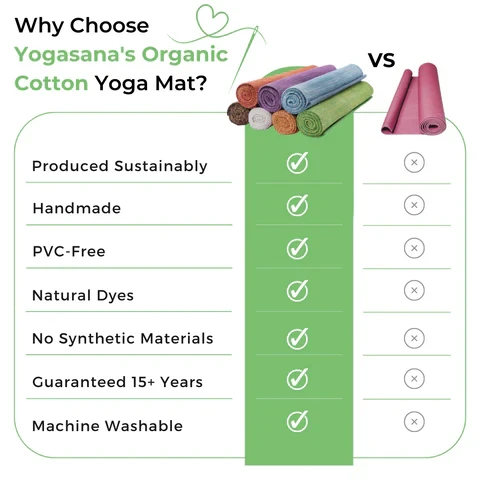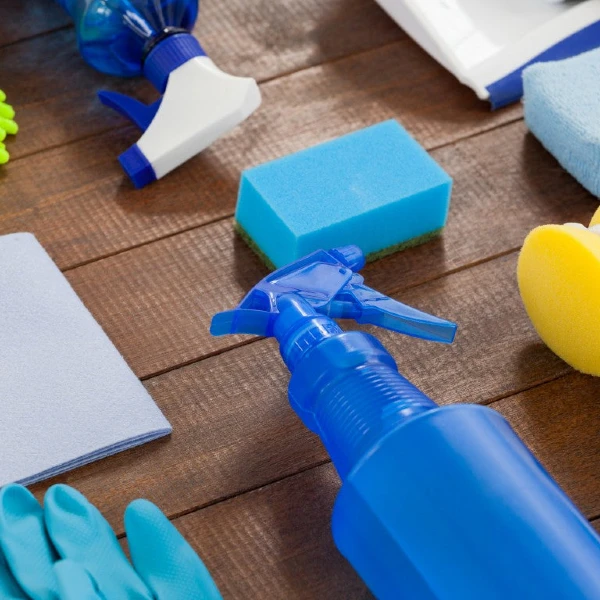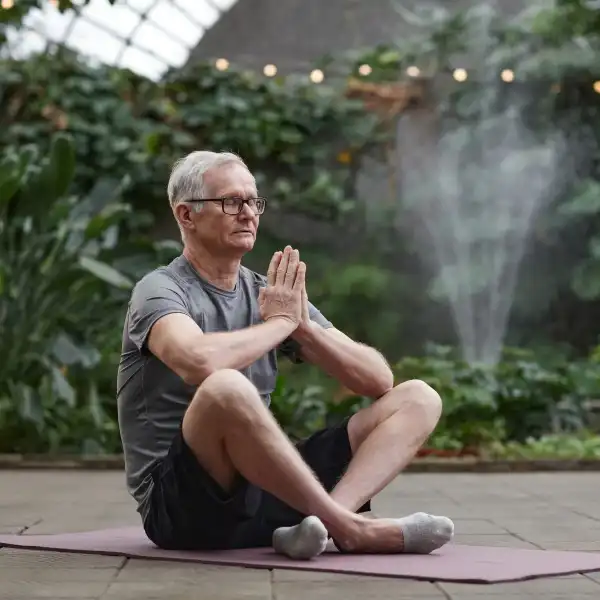Do We Need to Clean Our Yoga Mats?
Are you wondering how to clean your yoga mat? There are many ways and if you are interested in cleaning your mat without having to buy the spray bottles filled with chemicals — you’re in luck! We’ll provide you with a few tips on how to clean your yoga mat (without using toxic chemicals). We put together this guide to help you learn more about different ways you can clean your yoga and meditation mat or rug.
If you are like most yogis, you use your yoga mat on a regular basis. And you probably bring it with you everywhere you go. You sweat on it, put your feet on it, and press your face close to it in poses like child’s pose and in between bow poses.
Which bring us to this question — during child’s pose, did you realize it has been a minute since you’ve cleaned your yoga mat?
Is Cleaning Your Yoga Mat Necessary?
The answer is: YES! There are numerous reasons to clean your yoga mat. Did you know that your yoga mat could have bacteria in it?
In a study done by the NIH, it was shown that the bottoms of our shoes are more likely to adhere to clostridium difficile (scientific word for the bacteria that gives you diarrhea), with a shocking 39.7% testing positive for this!
Ok, but How Does Bacteria From Shoes Get on Our Yoga Mats?
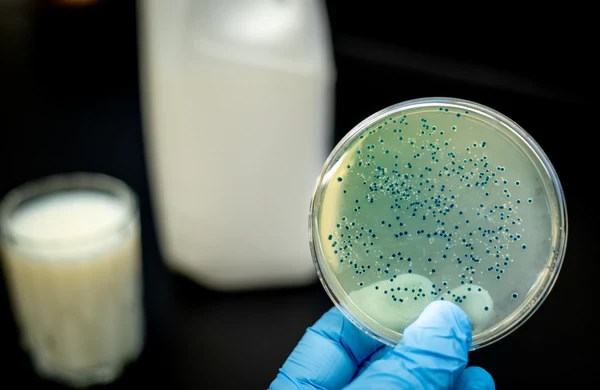
When a yoga studio is a shared space with other fitness classes or if they allow shoes in the practice room, there is a potential for the shoes to track in the bacteria. If you touch your yoga mat after it has been in contact with a contaminated spot on the floor and forget to wash your hands before eating — you risk catching this diarrhea-inducing bacteria. Yikes!
If you are interested in reading more about this, the complete study can be found here: Investigation of potentially pathogenic Clostridium difficile contamination in household environs.
The first step to prevent catching infections from a yoga mat is to use your own! Invest in a good yoga mat that you can travel with and clean regularly. By using your own yoga mat, you will minimize your risk of contracting numerous undesirable infections.
Catching Infections From Dirty Yoga Mats
If you use your own yoga mat, you reduce the odds of catching most types of infections. The most prevalent infection that is caught when using communal yoga mats is athlete’s foot. When yoga mats are not properly cleaned or sanitized, it creates a greater risk for the spread of athlete’s foot from one yogi to another.
According to an interview with Long Island College Hospital podiatrist Greg E. Cohen, dirty exercise mats are the reason behind the significant increase in athlete’s foot and plantar wart cases.
The Most Common Infection From Dirty Yoga Mat
Athlete’s Foot:
- Fungal skin infection that can begin in between the toes
- Usually presents itself as an itchy, dry, scaly rash
- It is contagious and can be spread through contaminated floors, towels, clothing, or yoga mats
- Not a life-threatening infection but can be a persistent problem and difficult to resolve
- Sometimes self-treatment works, but in some cases, it is important to seek a doctor for help
We practice yoga for a healthier spirit, mind, and body — the last thing we want is to catch athlete’s foot! Invest in a yoga mat to prevent exposure to this type of infection.
Our favorite yoga mats are ones that are eco-friendly and sustainable. If you eat organic, chemical-free foods — you will probably want your yoga mat to have all natural materials in it. To learn more, read our guide to sustainable yoga mats: How to choose the best sustainable yoga mat.
Once you’ve invested in a sustainable yoga mat, it is important to regularly clean your mat. If you regularly bring your mat to a shared space or yoga studio, you should wash it frequently.
We researched different methods on how to clean various yoga mats, and we chose approaches that don’t use chemicals and support the eco-friendly lifestyle.
Time to get started, let’s explore how to get your mat squeaky clean!
To start off, it is helpful to learn how to make an easy-to-make homemade mat spray that can be used daily. At Yogasana, this is one of our favorite solutions – we have this nearby our mats for post-practice cleanup and maintenance.
Simple, Non-toxic Mat Spray:
- 1 cup distilled water
- 1 cup white vinegar
- Eucalyptus or lavender essential oil, as needed
- Tea tree oil (it has antimicrobial properties that can kill bacteria and fungi on your mat)
Mix the liquids into a spray bottle and spray your mat after every practice. Wait for the liquids to dry before rolling up the mat — damp mats will trap moisture and encourage bacterial growth.
Important note: Every yoga mat is unique and can react to water or cleaning solutions differently — it is important to spot check/clean your mat before attempting one of the methods.
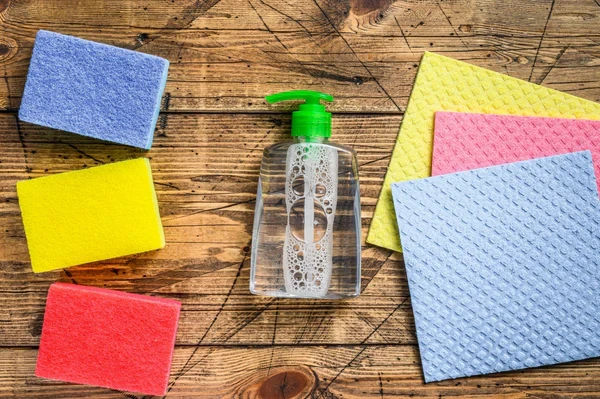
3 Cleaning Methods Based on Type of Yoga Mat
The 3 different methods for deep cleaning your yoga mat is based on the type of yoga mat you own.
There are 3 different types of mats (for cleaning purposes):
- Closed-cell yoga mat
- Open-cell yoga mat
- Natural fiber or cotton yoga mat
Closed-cell yoga mats are thinner and are water-soluble — they degrade when submerged in water. If you own a closed-cell yoga mat, it is important to exercise caution with the amount of water used when cleaning the mat.
Cleaning Closed-Cell Yoga Mats:
- Add a few drops of soap to a bowl of warm water
- Immerse a cleaning (microfiber would be best) rag into the bowl and gently wipe the mat from top to bottom: avoid vigorous scrubbing or you will break down its natural sticky nature and have parts of the yoga mat coming apart
- Dry the mat with another rag
- Important: allow the mat to fully dry before rolling up (never roll it up damp)
- Lay your mat in the sun to dry after soaking/cleaning (if possible). Natural rays from the sun will kill any remaining bacteria.
Cleaning Non-water-Absorbent Mats:
- Fill a bathtub with warm water and a few drops of dish soap
- Immerse the mat and wait 5 minutes
- Gently clean it with a microfiber cloth
- Rinse out the soap
- Lay your mat in the sun to dry after soaking/cleaning (if possible). Natural rays from the sun will kill any remaining bacteria.
Cleaning Natural / Cotton Fiber Yoga Mats:
Yogasana has a collection of organic cotton yoga mats) follow this method of cleaning (be sure to use all natural, chemical-free detergents!)
- Machine wash cold
- Air dry

Daily Cleaning/Disinfecting Routine:
- Spray mat with homemade vinegar disinfectant
- Wipe down mat with damp microfiber cloth to remove any sweat or dirt that may have accumulated
Avoid using wipes that have abrasive harsh ingredients — they often degrade the yoga mats and expose you to breathing in chemicals during your yoga practice. Choose homemade natural sprays instead.
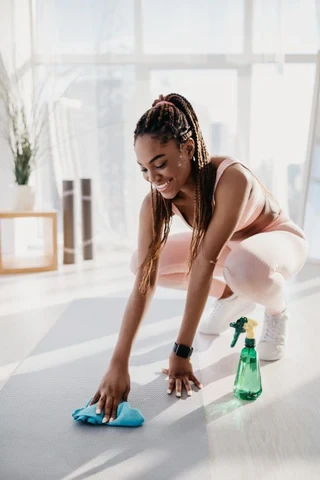
Which Is the Easiest Method?
Cleaning cotton yoga mats has the simplest and easiest solution! There’s no need to do a complicated solution or wash — simply put the mat in the machine. It doesn’t get much easier!
If you are looking for a yoga mat that is easy to clean and disinfect, then choose cotton. Cotton yoga mats like the ones in our Yogasana store are great because they are not loaded with chemicals and made with 100% GOTS certified organic cotton.
Conclusion
Discovering how to clean your yoga mat is fairly simple – be sure to do this when you practice in hot and humid environments (like hot yoga).
Yoga mats tend to get dirty. Not only do they accumulate sweat and bacteria, but they can also pick up dust and dirt from the floor. If you don’t clean your yoga mat regularly, it can become a breeding ground for germs and fungus. Learning how to clean your mat is simple, once you have determined the type of yoga mat material. The easiest is cotton fiber yoga mats — they go right into the washing machine.
Clean your yoga mat with natural ingredients that are safe for your body and the environment.
